Varicose Veins Treatment
Varicose veins and spider veins may be unsightly, but they can affect more than just your appearance. For some, these vein issues can cause significant discomfort. Varicose veins can also put you at risk of blood clots or open sores on your lower legs.
Dr. Moeinolmolki (Dr. Moein) of Healthy Life Bariatrics in Los Angeles offers a minimally invasive treatment for ridding your legs of these unsightly veins. The treatment can also reverse symptoms such as leg pain and fatigue that often accompany varicose and spider veins. Having the treatment performed by a talented aesthetic surgeon like Dr. Moein can even prevent future leg vein complications.
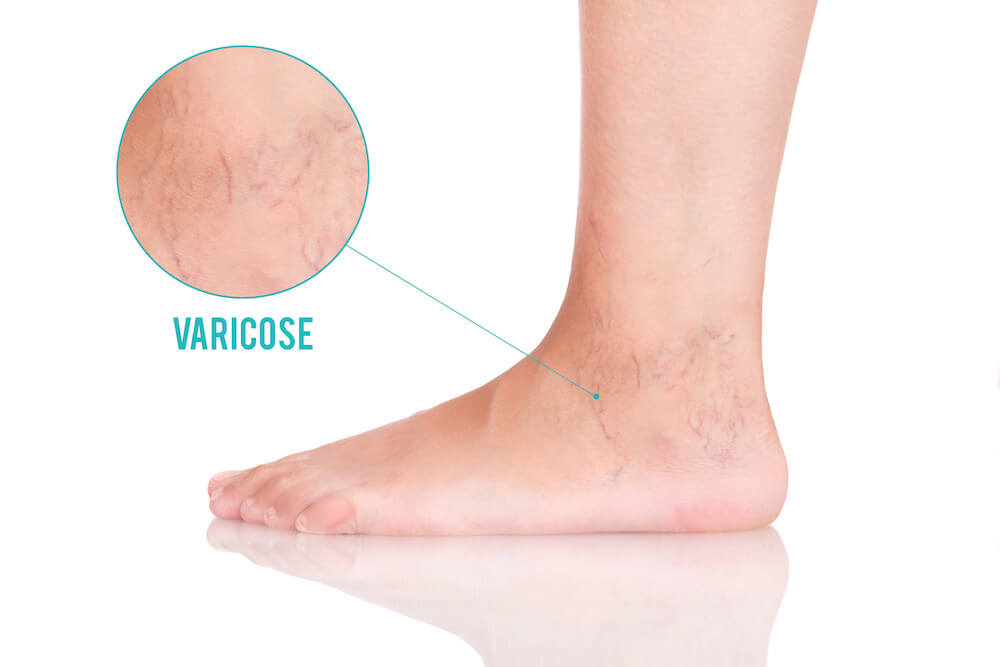
Table of Contents
- Varicose Veins Treatment
- Why Do These Leg Veins Become Visible?
- Are Spider Veins Dangerous?
- Difference Between Spider Veins and Varicose Veins
- Sclerotherapy for Varicose Veins
- What Causes Varicose Veins?
- What Is The Success Rate of Laser Treatment for Varicose Veins?
- Are You a Good Candidate for Spider Vein Treatment?
- How Are Varicose Veins Diagnosed?
- Treatment Options for Varicose Veins
- What is Healing and Recovery Like for Spider Vein Treatment?
- Leg Varicose Vein Treatment by Vein Specialist Los Angeles, CA
Why Do These Leg Veins Become Visible?
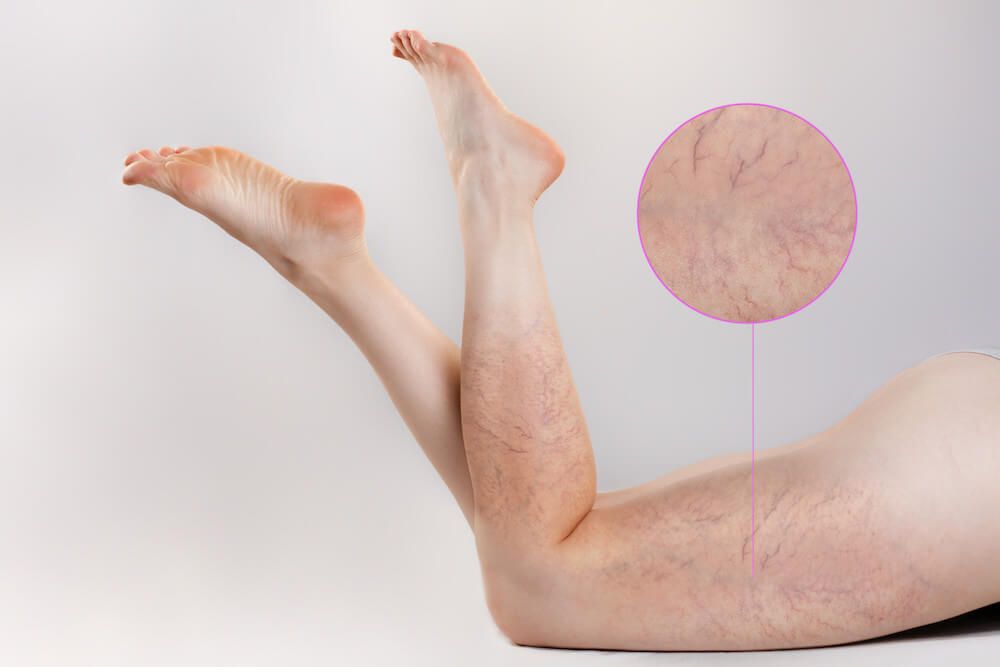
Varicose veins and spider veins both represent veins that have become damaged. They form when one-way valves inside the veins become weak. In a healthy vein, the valves push blood in a single direction, which eventually flows back to our heart. When the valves become weak, some blood can flow in reverse, causing it to build up inside the vein. The extra blood forces the walls of the vein to expand. This allows the varicose or spider veins to become visible just below the skin.
Are Spider Veins Dangerous?
If vein problems run in your family, you may be at higher risk of developing varicose or spider veins. Some people get them because they sit or stand for long periods, while others may find they form as a symptom of age, obesity, or pregnancy.
Spider veins are unique in that they can be caused by excessive amounts of sunlight, injury, or hormonal changes inside the body.
Difference Between Spider Veins and Varicose Veins
Varicose veins tend to emerge and become visible just under the skin's surface. Eventually, the veins bulge enough to cause pain. Even if no pain is present and you merely dislike the appearance of your veins, both conditions – varicose and spider – are best considered as medical problems that should be addressed as soon as possible.
Spider veins (telangiectasia) are mainly cosmetic and can be taken care of without issue by your cosmetic body contouring surgeon. Spider veins mimic the webs of arachnids and tend to take on the appearance of lattice-like patches of dilated veins that appear just below the skin's surface.
It can be caused by pregnancy, obesity, hormonal changes, genetics, sun exposure, aging, and standing or sitting for extended periods.Spider veins are typically harmless, though they can make you feel uncomfortable wearing leg-bearing clothing, especially if you have fair skin.
Sclerotherapy for Varicose Veins
For both types of vein problems, there is a non-surgical treatment known as sclerotherapy, which involves injecting a specialized chemical solution directly into the affected veins through a tiny plastic tube. The chemical used causes the damaged veins to become irritated and swell, which blocks blood flow to the vein. Over time, the veins will transform into scar tissue before disappearing entirely.
The sclerotherapy treatment usually takes less than an hour to complete. It begins with you lying down on the treatment table. Your surgeon will usually employ a light, local anesthetic. Your surgeon will ensure that your legs are slightly elevated before inserting a tiny catheter into one of the damaged veins. The catheter will be guided to the treatment site with the help of an HD ultrasound. When the injections are complete, you may be fitted with compression stockings that can help prevent blood from returning to the treated veins. If you have vein issues over a wider area, you may need several treatments to achieve the intended results.
You can expect to return to your normal routine within a day of your sclerotherapy treatment. The final results will be seen three weeks to three months after the treatment, whereby the veins should completely disappear.
What Is The Success Rate of Laser Treatment for Varicose Veins?
Dr. Moein can also use lasers to treat varicose and spider veins. The laser's light is directed precisely at the vein, which destroys the structure of the vein entirely without affecting the surrounding skin.
This varicose veins treatment shows results immediately. Some small spider veins could disappear completely with a single appointment. Larger spider veins and varicose veins may become darker with laser treatment, whereby they will usually disappear between one and three months after treatment. If the veins are large and darker in color, you may require a few more treatments before the veins disappear altogether.
After the laser treatment, you can go right back to work or otherwise continue your normal activities. You may need to wear compression stockings for a short time. You will also be advised to protect the treated area from the sun for three to four weeks. This helps to prevent dark spots from forming.
Are You a Good Candidate for Spider Vein Treatment?
To be considered for spider vein therapy, you should be in good physical condition with spider veins visible on the legs or face.
Those with blood disorders or a history of blood clots may not be recommended for surgery. You will also be denied spider vein treatment if you are pregnant, have difficulties healing, or suffer from an ailment, such as heart disease.
How Are Varicose Veins Diagnosed?
To accurately identify varicose veins, providers visually inspect the legs while patients stand to reveal distended rope-like vessels. Imaging tests clarify affected vessels, venous insufficiency, and direction of blood flow:
Duplex Ultrasound High-frequency sound waves coupled with Doppler detection enrich visualization of anatomy, valve closure, venous flow direction, and any reflux.
Venography Injecting contrast dye into leg veins through catheters allows X-ray imaging detailing overall venous anatomy and abnormalities.
CT or MRI Venography
Cross-sectional CT scans and magnetic resonance venography render precise 3D reconstructions of the vasculature identifying problem regions.
Always seek a thorough medical evaluation when noticing new leg vein enlargement or associated discomfort to elucidate underlying drivers.
Treatment Options for Varicose Veins
A range of manageable solutions for varicose veins spans from compression garments to sclerotherapy injections, vascular ablation techniques, and selective surgeries as a last resort.
Compression Socks
Compression stockings are commonly recommended to manage varicose veins. They work by gently applying pressure to the legs, which improves blood flow, reduces swelling, and helps prevent the veins from worsening. Many patients also experience relief from symptoms like aching, heaviness, and fatigue, making compression therapy a simple yet effective treatment option.
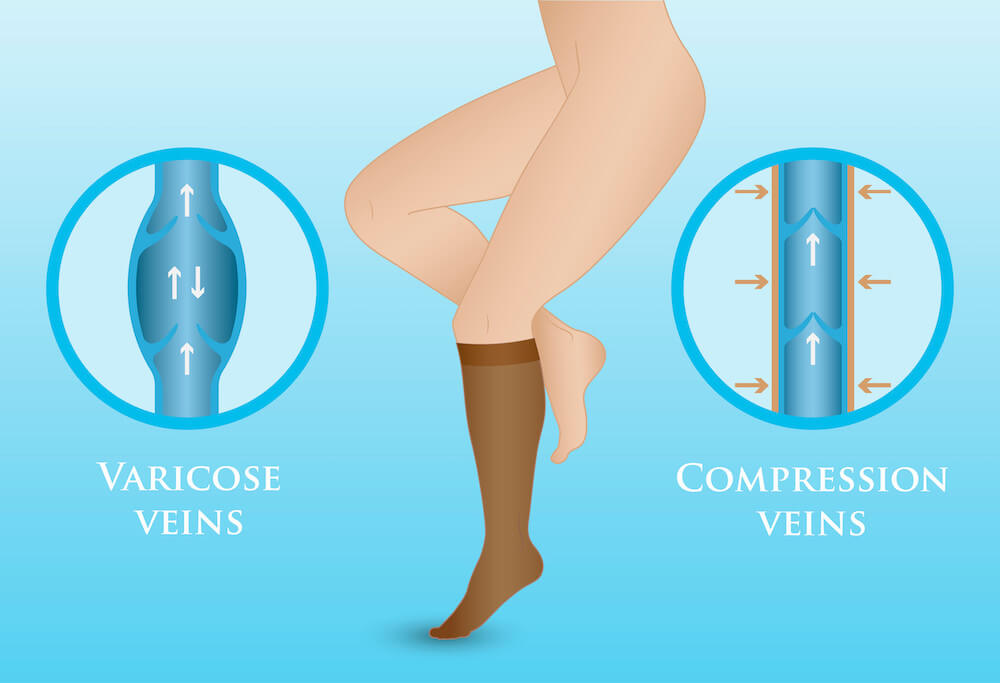
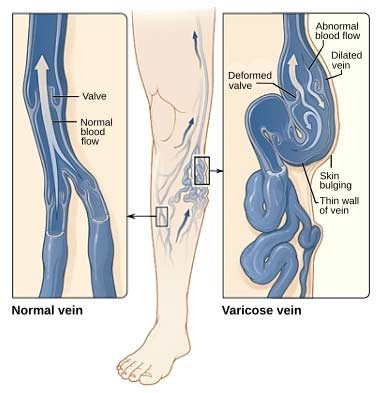
Sclerotherapy
Sclerotherapy involves injecting an irritant chemical like sodium tetradecyl sulfate into damaged veins triggering local inflammatory scarring that seals dysfunctional vessels shut so blood gets shunted back into deeper outflow tracts.
Sclerotherapy is minimally invasive and typically performed in an outpatient setting without the need for anesthesia. Most patients tolerate the procedure well, experiencing only mild discomfort or a slight burning sensation at the injection site. Over time, the treated veins fade and are reabsorbed by the body, improving both symptoms and cosmetic appearance. Compression stockings are often recommended afterward to enhance healing and prevent recurrence.
Radiofrequency Ablation
Catheter ablation utilizing laser or radiofrequency heat also termed VNUS Closure seals faulty vein walls prompting restored directional flow. The procedure is guided by ultrasound, ensuring precise catheter placement within the affected vein.
As the radiofrequency energy is delivered, the vein wall collapses and seals shut, eventually being absorbed by the body. Most patients are able to walk immediately after the treatment and return to normal activities within a day. Wearing compression stockings post-procedure is typically advised to support vein closure and enhance circulation during recovery.
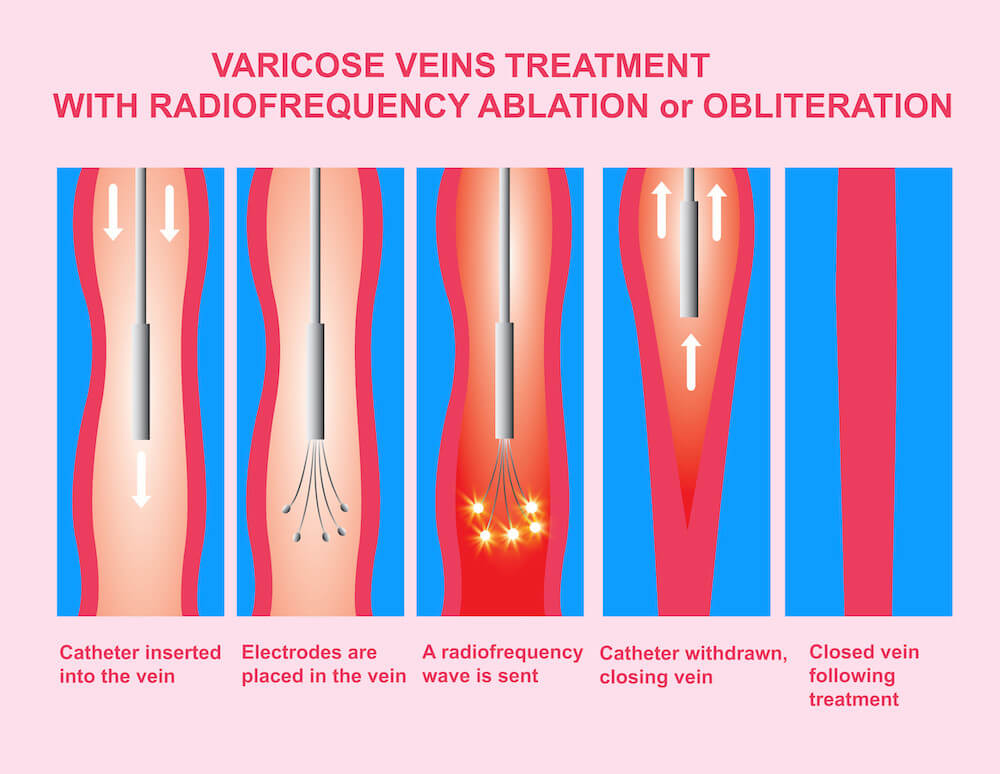
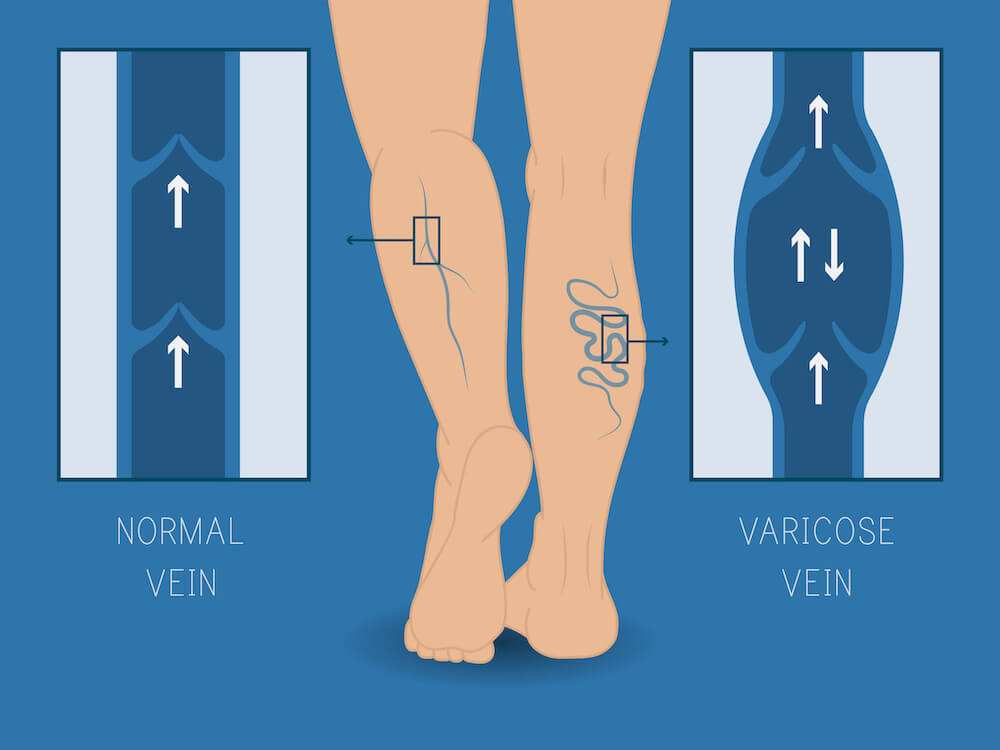
Ultrasound Guided Foam Sclerotherapy
For larger varicose veins not effectively treated by simple liquid injections, mixing air into specially formulated foams allows displacement of much greater vein volume driving successful closure rates above 80% after uniform contact with interior vessel walls.
Ambulatory Phlebectomy
When sizable ropy varicose veins remain despite chemical or thermal ablation, segmented surgical extraction can eliminate stubborn clusters (a procedure termed ‘stab avulsion’ or ambulatory phlebectomy) which only requires local anesthetic without overnight hospitalization.
Vein Ligation and Stripping
This last resort surgical control for severe cases with no other recourse involves fully removing the entire saphenous main drainage vein stem tied off at the top and stripped out from an incision below completely diverting return blood to healthier channels.
Laser and Radiation Treatment
Surface varicose veins are too small for other options and sometimes undergo local laser or radiation bombardment destroying them although skin irritation often results requiring extensive wound care.
What is Healing and Recovery Like for Spider Vein Treatment?
Dr. Babak Moeinolmolki will provide you with clear, personalized instructions to support a smooth recovery after your surgery. Following these guidelines is essential to minimize complications. In the days and weeks after your procedure, you may be advised to wear compression stockings. These support garments help promote healthy blood flow in the treated area and can also reduce the risk of post-operative discoloration in the lower legs.
Leg Varicose Vein Treatment by Vein Specialist Los Angeles, CA
Dr. Moein has treated many patients who have had trouble with leg veins in the past. Today, these satisfied patients remain leg-vein-free thanks to Dr. Moein's revolutionary treatments. If dark veins are getting you down and preventing you from wearing certain clothing, or if they are causing you pain, remedy those veins today. Contact Dr. Moein at Healthy Life Bariatrics for effective and near-painless varicose or spider vein treatment.


